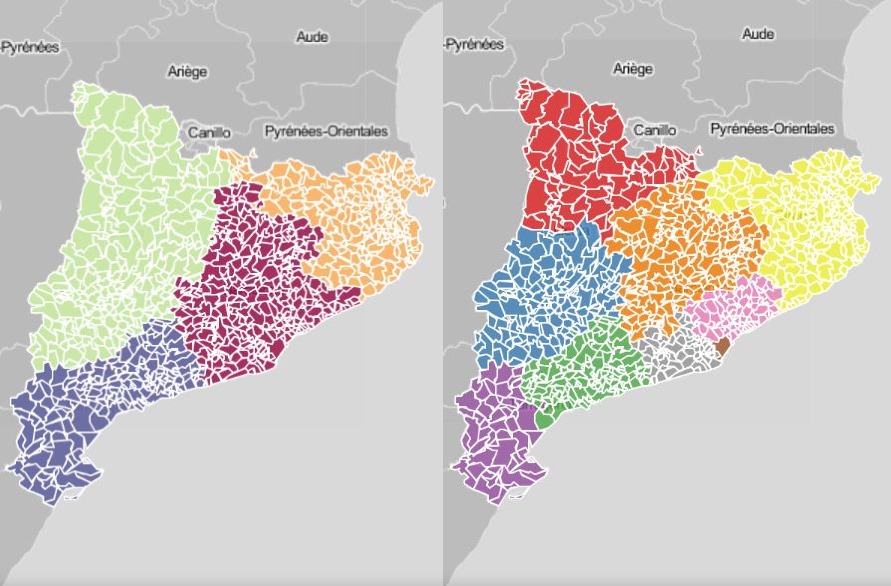De-escalation of lockdown by health regions or provinces: what’s the difference?
Catalan officials argue it makes little sense to divide de-escalation process in provinces, and push for health regions alternative

“Catalonia returns to 1833.” This was the Catalan president Quim Torra’s outraged reaction soon after Spain’s leader, Pedro Sánchez, announced a 4-phase lockdown de-escalation plan which was divided by provinces, meaning decisions on whether a territory could move to the next phase would be taken separately for each province.
After many days asking for it, Torra’s cabinet is expected to hand in an official proposal to divide Catalonia by health regions and not provinces on Wednesday.
But why a reference to 187 years ago? Why is the Catalan government against a de-escalation of confinement by provinces, and instead pushes for health regions? What’s the difference?
To put it in few words, the Principality of Catalonia was administratively divided by areas called ‘vegueries’ until sovereignty was lost to the Bourbons in 1714 – then the Castillian ‘corregimientos’ were imposed, and a century later, in 1833, a further unification was put forward with the division of Spain by provinces.
Provinces introduced in 1833
Since then, Catalonia has been divided in four provinces: Barcelona, Girona, Lleida and Tarragona. Yet, whenever the country has had self-rule in the past 200 years, its authorities have considered provinces artificial and have wanted to restore the ‘vegueries’.
Now, while provinces still stand for any purpose in Spain, services in the Catalan administration have organized their territory in a way they thought was more in line with reality, using the ‘vegueries’ system as a reference.
So, the Catalan public health system is organized in seven regions made “taking into account geographical, socioeconomic, and demographic” criteria. And each of them is divided into basic health areas.
During the current health crisis, the Barcelona health region has been split into three, with the capital left apart.
The nine health regions
Therefore, for the Catalan government, phase changes in the de-escalation process should be decided separately for each of the nine health regions:
Alt Pirineu i Aran: six counties in the western Pyrenees, including the Aran Valley.
Lleida: six counties in the western part of Catalonia.
Camp de Tarragona: six counties around Tarragona, in the south, but not including the Ebre region.
Terres de l’Ebre: the four counties where the river Ebre flows, in the southernmost part of Catalonia.
Catalunya Central: six counties in central Catalonia, including the Igualada area, where the biggest cluster of Covid-19 was identified.
Girona: seven counties in the northeastern Girona area, plus ten towns in the Maresme county (known as Alt Maresme), such as Calella.
Barcelona: the Catalan capital.
Metro area – north: the remaining towns of Maresme county, the two Vallès counties and the cities of Badalona, Sant Adrià de Besòs and Santa Coloma de Gramenet.
Metro area – south: L’Hospitalet de Llobregat, and the counties of Alt Penedès, Baix Llobregat and Garraf.
The Catalan authorities believe this would be a more logical division than by provinces, deemed too large and diverse.
Health minister Alba Vergés used the province of Barcelona to demonstrate this point, which includes the densely populated Catalan capital of Barcelona as well as remote villages in the Pyrenees mountains.